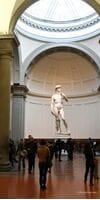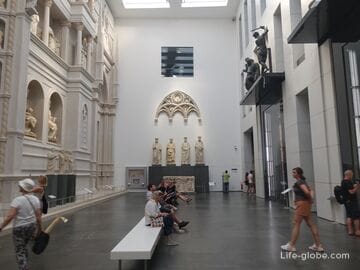The Accademia Florence Gallery or the Accademia di Belle Arti in Florence (Galleria dell'Accademia, L'Accademia di belle arti di Firenze) is an art museum in Florence with rich collections of paintings, sculptures, icons and musical instruments.
One of the most famous exhibits of the gallery is the famous statue "David" by Michelangelo. Therefore, the museum is known as the "Michelangelo David Sculpture House".
The creation of the gallery dates back to 1784, when the Grand Duke of Tuscany Pietro Leopoldo transformed the Academy of Drawings, founded in 1563 by Cosimo I de' Medici, into the modern Academy of Fine Arts. The new institution occupied the premises of the fourteenth-century Hospital of St. Matthew (Ospedale di San Matteo, San Matteo) and the monastery of San Niccolò di Cafaggio (monastero di San Niccolò di Cafaggio).
The museum was enriched by the suppression of churches and monasteries by order of Pietro Leopoldo in 1786 and Napoleon Bonaparte in 1810. A decisive event in the history of the museum was the transfer of the original sculpture "David" by Michelangelo to the gallery from Piazza della Signoria in August 1873 (today a copy of David is placed on the square near the Palazzo Vecchio). The sculpture "David" was kept in a box for nine years and was waiting for the completion of the pedestal "Tribune", designed by architect Emilio De Fabrice.
Today the Accademia Gallery is one of the most popular museums in Italy and is located in the center of Florence, at Via Ricasoli, 58/60, 50129 Firenze FI, Italy.

Collections of the Accademia Gallery of Florence
The Accademia Gallery contains some of the most important collections of paintings and sculptures in the world. Among them are sculptures by Michelangelo and a rich collection of ancient Italian paintings. No less relevant is the collection of models and plaster casts of Lorenzo Bartolini and his pupil Luigi Pampaloni, which makes up the Gypsum Library located in the monumental hall of the 19th century. The museum also houses musical instruments of the Grand Dukes of Medici and Lorraine, mainly from the collections of the Luigi Cherubini Conservatory in Florence.
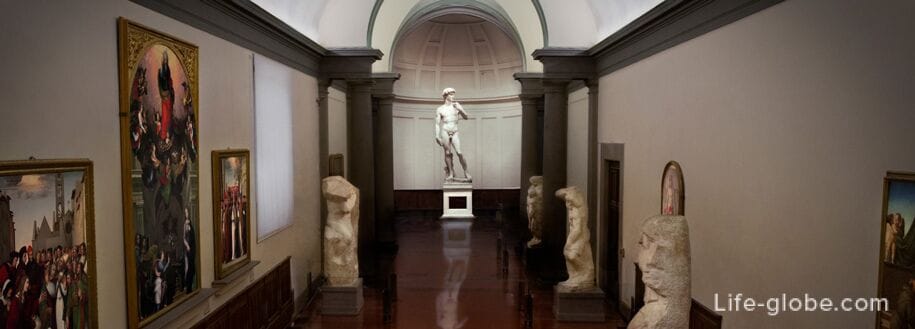
The sculpture collection shows works from the 16th to the 19th centuries, from Giambologna's "Abduction of the Sabines" to Michelangelo's unfinished sculptures, which were originally intended for the tomb of Pope Julius II in Rome.
The model "The Abduction of the Sabine Women" by the great world-famous sculptor Giambologna, greets the visitor at the entrance to the Academy Gallery, towering over the Colosso Hall. This is one of the rare clay models of the sixteenth century, made on a scale of 1:1 for the marble version created by the same artist in 1582 and now visible in the Loggia Lanzi in Piazza della Signoria in Florence. In the Hall of the nineteenth century, the Plaster Library is decorated with plaster models by Lorenzo Bartolini, one of the most important Italian sculptors who lived between the eighteenth and nineteenth centuries, acquired by the Italian state after the artist's death. Along with these works, there are also plaster casts of his pupil Luigi Pampaloni, a famous artist of the Florentine Academy of Fine Arts.
The most famous of the museum's sculptures is the marble statue "David" by the outstanding Italian sculptor of the High Renaissance Michelangelo Buonarroti.
The sculpture was first presented to the public on the Piazza della Signoria in Florence on June 8, 1504. Then the statue of the Old Testament hero was perceived as a symbol of freedom and the struggle for independence of the Florentine Republic.
The height of the statue is 410 centimeters, and together with the pedestal - 517 centimeters.
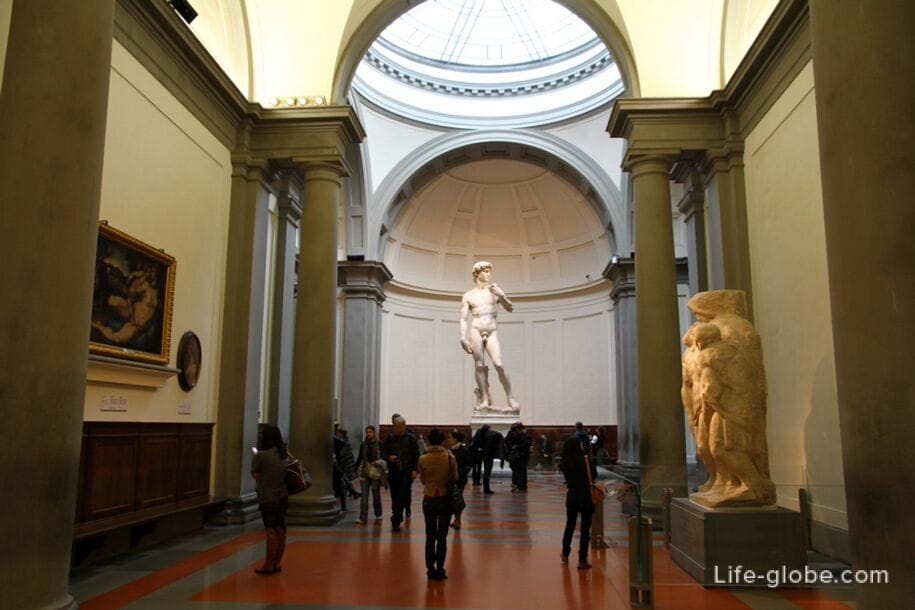
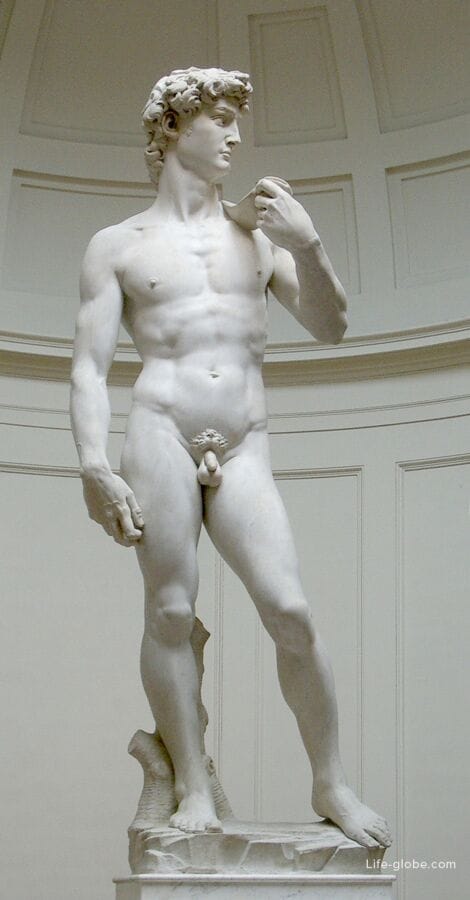
In addition to David, the museum exhibits other masterpieces of the great sculptor: "St. Matthew", "Slaves of Michelangelo" and "Pieta Palestrina".
The marble sculpture group "Pieta Palestrina" depicts the Madonna and St. John the Theologian supporting the lifeless body of Jesus Christ. Among the large sculptures attributed to Michelangelo, the Pieta di Palestrina is the only one not mentioned in sources and archival documents. The statue was created in 1550-1560 and has a height of 251 centimeters.

The gallery's Painting Collection includes prestigious gold-background paintings created between the thirteenth and early fifteenth centuries; masterpieces of late Gothic and Renaissance art; important works of the sixteenth century; altarpieces created between the sixteenth and seventeenth centuries; as well as a selection of nineteenth-century masterpieces.
These are the works of the greatest Florentine artists, such as Maestro della Maddalena, Giotto, Maestro della Santa Cecilia, Bernardo Daddi, Taddeo Gaddi, Andrea Orcagna, Nardo di Chione, Giovanni da Milano, Agnolo Gaddi. From the late Gothic side, the most important group of works by Lorenzo Monaco stands out. Renaissance painting is represented by the works of Paolo Uccello, Sandro Botticelli, Domenico Ghirlandaio and Filippino Lippi. The collections of paintings of the sixteenth century are represented by masterpieces of such masters as Fra Bartolomeo, Andrea del Sarto and Pontormo.
The large altarpieces show the development of Florentine painting from the influence of Michelangelo's models to the new spirituality of the Counter-Reformation. The Gypsum Library has a significant collection of paintings by nineteenth-century masters who studied or taught at the Academy of Arts.
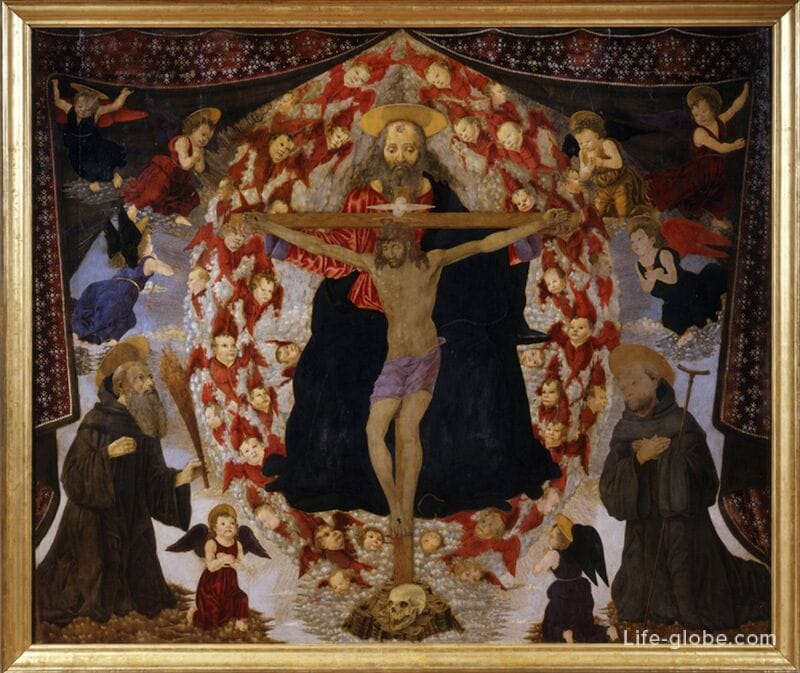
The collection of the Florentine conservatoire "Luigi Cherubini" unites about fifty musical instruments from the private collections of the Grand Dukes of Tuscany, Medici and Lorraine, collected in the second half of the 17th - first half of the 19th centuries.
The collection highlights the tenor viola and cello by Antonio Stradivari, both parts of a quintet created in 1690 for Grand Duke Ferdinando de' Medici, a cello by Niccolo Amati in 1650, an oval spinet created by Bartolomeo Cristofori.
A unique work of its kind is the Psalter (the work of Michele Antonio Grandi, circa 1700), since all its parts consist of marble of different quality. Next to it are paintings by such authors as Anton Domenico Gabbiani and Bartolomeo Bimbi, who represented musical life at the Medici court.
In the premises of the Department, you can hear the sounds of exposed instruments through multimedia stations, which also offer an overview of the musical culture of the Grand Duke of Florence.

The Psalter in marble
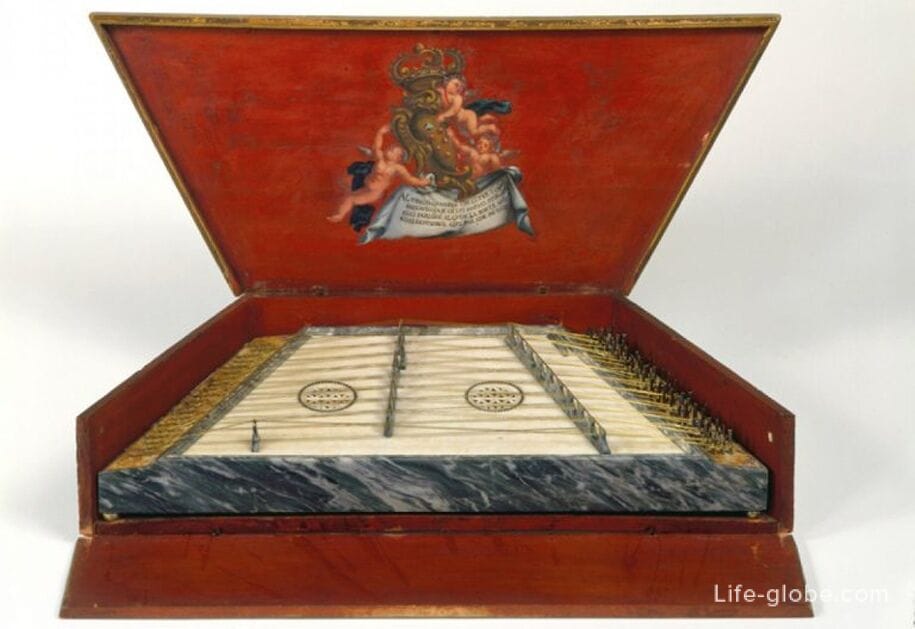
Practical information
Temporary exhibitions and educational programs are held in the Galleries of the Academy of Florence.
Entrance to the Academy Gallery is paid. Admission for children under 18 and persons with disabilities is free. An audio guide can be rented for a fee.
Tickets can be purchased at the gallery's ticket office or online in advance on the website.
The cost of tickets, opening hours of the gallery, exhibitions and events, we recommend checking on the official website of the Gallery of the Academy of Florence: galleriaaccademiafirenze.it .
Address of the Accademia Gallery of Florence (entrance): Via Ricasoli 58/60 50122 Firenze, Italia.
Coordinates of the Florence Academy Gallery: 43°46'37.0"N 11°15'32.0"E (43.776944, 11.258889).
All accommodation facilities in Florence (hotels, apartments, guest houses, etc.), including in the historical center of the city and more remotely from it, can be viewed and booked here




